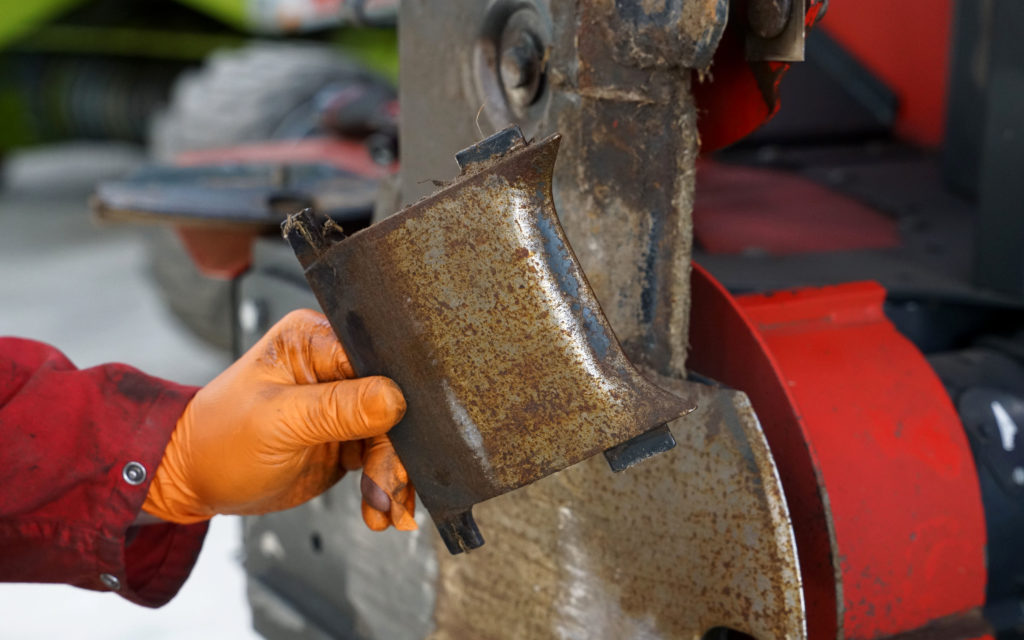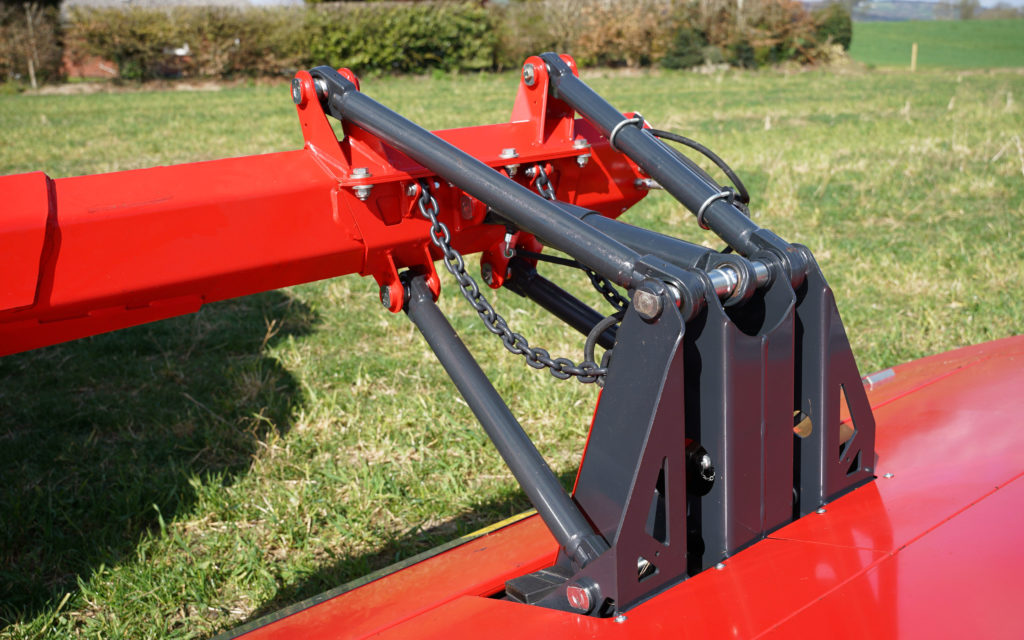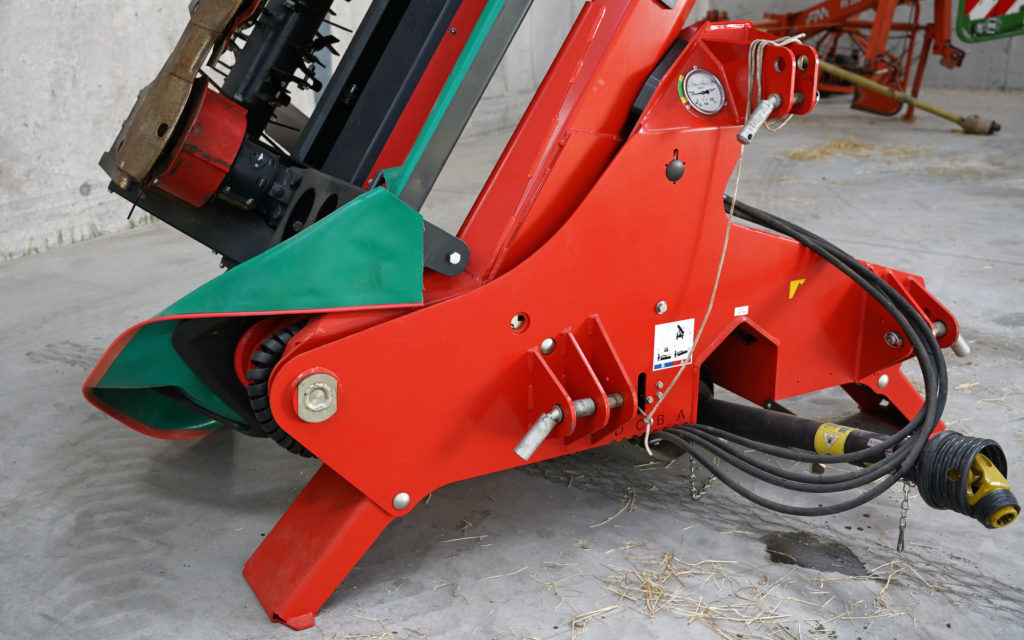April is here and in just a few short weeks the farm mower will once again be busy on the silage fields, so now is the time to freshen it up or maybe consider investing in a new machine altogether.
If you are looking to replace the existing machine, then there is an overwhelming choice on the market. However, if you wish to ensure that the present model is fit for another season, then it is time to give it a pre-season check.
Making hay in Co. Carlow
Recently Agriland visited the the family farm of John Doyle, sales manager for the Kverneland grassland range, for some tips on maintaining a mower and what to look for if buying new.

The main enterprise on the farm is the growing of cereals for seed, with hay being grown as a break crop every third year.
Two cuts of grass are taken annually with the hay being baled using a Claas big square baler, complete with a three-bale accumulator.

With John working for Kverneland it is little surprise that the farm has a 3.16m 3332MT mower from the company which has already seen one season on the farm.
This is a heavy duty machine and, relatively speaking, is not over stressed, but, like any other mower, it pays to keep it serviced.
Catching up with maintenance
Matthew Butler, service technician for the company, stresses that the best time to service any machine is just after it has been used.
By doing so, any free play in gears, bearings or belts will be noticeable. After a winter of storage, machines tend to be stiff and a slack bearing may not yield to hand pressure, but as soon as it is out in the field, it will free up and start squealing.

Likewise, in terms of the PTO clutch, Matthew recommends that it be slackened off before storage, to prevent the plates seizing together, causing the mowers drive train to be poorly protected.
He suggests that maintenance should be done in the autumn for maximum effect, a spring check will then just ensure that nothing has deteriorated over the winter and that the gear lubricants are still in place.
Wearing parts
Wearing parts are also best exchanged in the autumn, many require bolts to hold them in place and these are less likely to yield to a spanner after a winter's storage.
Blades are the obvious item to need changing and a new set for the season is highly recommended.
Worn and damaged blades are less efficient and will increase fuel consumption as well as put stress on the drive train.

The choice between quick change blades or attachment by bolts is one of personal preference.
Although quick change is available as an option, Matthew points out that with modern cordless power tools, changing blades is much less the task that it once was.
The blade carrier system on a quick fit type mower also relies on some sort of spring arrangement to clamp the blade, this can weaken with time, causing blades to be lost more regularly.
Skids, by their very nature, also wear, the rate depending on the pressure put upon them and length of stubble being left.

In Ireland there is a tendency to cut the grass as short as possible with the bed set at a steep angle of attack. Quite how desirable this is will, once again, be a matter of personal preference.
The effect of a short cut on the skids is to produce localised rather than even overall wear, necessitating more frequent replacement.
Blades are also more likely to engage with the ground and so get damaged.
Kverneland mowers have replaceable inter-point plates that fit between the skids, which act to knock the blades back straight should they become deformed. Thankfully, they too are easily changed.

Cutting too close to the surface is obviously detrimental to the mower, it will also increase the risk of dirt inclusion and takes the lower part of the grass that is not rich in sugars.
Mower oils and lubricants
Besides the usual grease points on the PTO and other bearings, it is important to check the lubricant levels in the gearboxes and mower bed. Annual replacement of all the fluids, usually 80-90W (EP80) is recommended.
Not only is it important to ensure the correct oil is used, but also that the correct amount is added.
Too little can result in excess wear while too much, results in excess drag. Any leaks should be immediately investigated and fixed.

If looking at a new mower, then the ease by which the grease points may be reached is important in ensuring regular servicing is carried out.
Any ball type mounting points will also benefit from a light oiling with WD40, or similar, to prevent water ingress and corrosion, which may go unseen and cause them to seize.
Ease of use
Modern professional disc mowers nearly all work on the principle of hanging from an arm mounted on to the rear of the tractor.

The linkage between the mower unit and the arm should allow for easy adjustment of the float pressure as well as allow for variations in the ground surface to be accommodated during travel.
The hydraulic connections should be simple to use and here the Kverneland mower has four pipes connected to double acting spools for all the hydraulic functions.

It also stores away in the folded position with three legs that create a stable platform, making it easier to mount onto the tractor without the angst-inducing issue of the link arm pins not being level.
All machinery responds well to some tender loving care and while manufacturers would be delighted to sell you a new mower on an annual basis, paying attention to the details will keep them running smoothly for many years.

